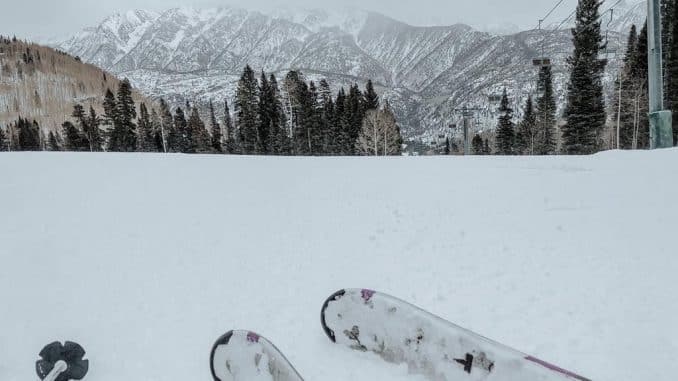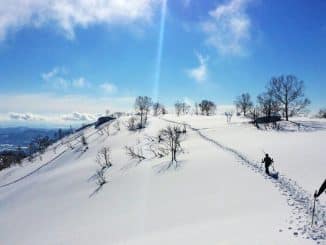
If you’re an intermediate skier, you’re exploring the mountain with renewed faith in your skiing skills. It’s a fantastic feeling, and you can enjoy it to the fullest. But, bear in mind that the intermediate zone is the best time to grow bad habits, or injure yourself, so do get a ski lesson. Therefore, spring into the ski season and avoid niggling injuries.
Stick to intermediate slopes
Skiers repeatedly targeting slopes beyond their skill level are by far the most common mistake we see on the hill. Though it may be tempting to test your newfound faith on expert terrain, most intermediate skiers would benefit from staying on intermediate terrain.
You provide yourself with the ability to learn new skills in a setting that allows you to experiment. On the easy ground, it’s a lot easier to experiment with your balance and technique than it is when you’re struggling for your life in an icy chute. When skiing on terrain that pushes you outside of your comfort zone, you’re more likely to fall back into tired, sometimes harmful patterns simply because they feel safe. You’ll find it much easier to try new things, learn new skills, and make errors on an easy pitch without damaging yourself.
Don’t lean too far back when going downhill
Skiing in the backseat entails leaning too far back when descending the slope. Almost every skier on the planet makes this mistake at some point during their day, and it’s something you’ll be focusing on as you advance, but the sooner you start, the better it will be in the long run. Learning to place pressure on the front of your skis will help you manage speed on steeps, retain control over jumps and drops, and, most importantly, prevent knee injury, which is the most common ski-related injury.
You can tell that you are leaning too far back if:
You see shin-bang in various situations (shin-bang feels similar to shin splints and is due to pressure on your calf.
You have a habit of falling back.
You find it really difficult to slide your skis through a turn or adjust edges by picking up your inside ski.
You’ll be working on getting a healthy, aggressive stance on your skis for a while. To begin, practice pressing down on the front of your boot. Consider flexing your ankle muscles as if you were trying to force your knee down into your toes.
Inside ski pressure
While you are no longer using the wedge in most skiing situations as an intermediate skier, the muscle memory from those early turns is likely still present in your skiing. Many beginner skiers use a technique known as “A-frame” skiing. Putting an equal amount of weight on both skis, in other words.
Even if you think you’re skiing parallel, you’ll almost certainly have a wedge somewhere in your turn before you can remove this simple mistake. Each turn for an experienced skier involves a significant shift in pressure from one ski to the other. An expert would likely put more than 90% of their weight on the outside ski at the broadest part of the curve, with only enough pressure on the inside ski to keep it tracking parallel to the outside.
Turning your shoulders with skis
When watching a truly professional skier negotiate a steep pitch, one thing you can note is their laser-focused attention downhill. Anyone skiing at a high level can keep their upper body almost upright. With their shoulders perpendicular to the slope’s fall-line as their legs and hips dance back and forth through the turns.
This ability has much more applications than just line planning. Upper body-lower body separation is the skill we’re working on here, and it’s one of the most beneficial abilities to learn at the intermediate level.
Leaving your Ski School early
It’s easy to think you’ve graduated from Ski School once you’ve mastered navigating blue and even black terrain without getting hurt. You’re full of self-assurance, skiing quickly, and having an excellent time. Why would you want to spend more money on classes if you can get by without them?
Practice is crucial, so you don’t need to spend every hour on the hill with a teacher, but that doesn’t mean you can avoid it entirely. The intermediate stage is the most vulnerable to developing poor habits that will hinder your success later on. All of the skills listed above can (and should) be practised on your own, but having the help of a qualified professional, will be invaluable.



